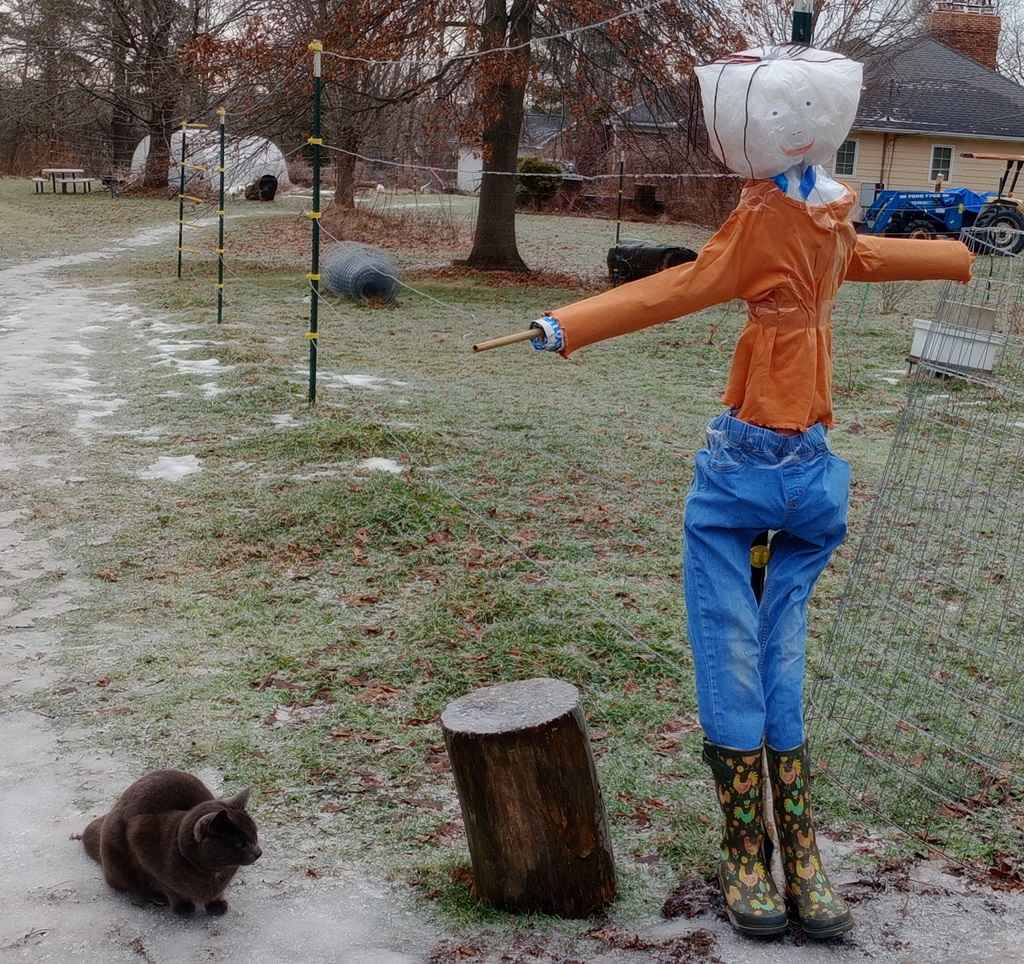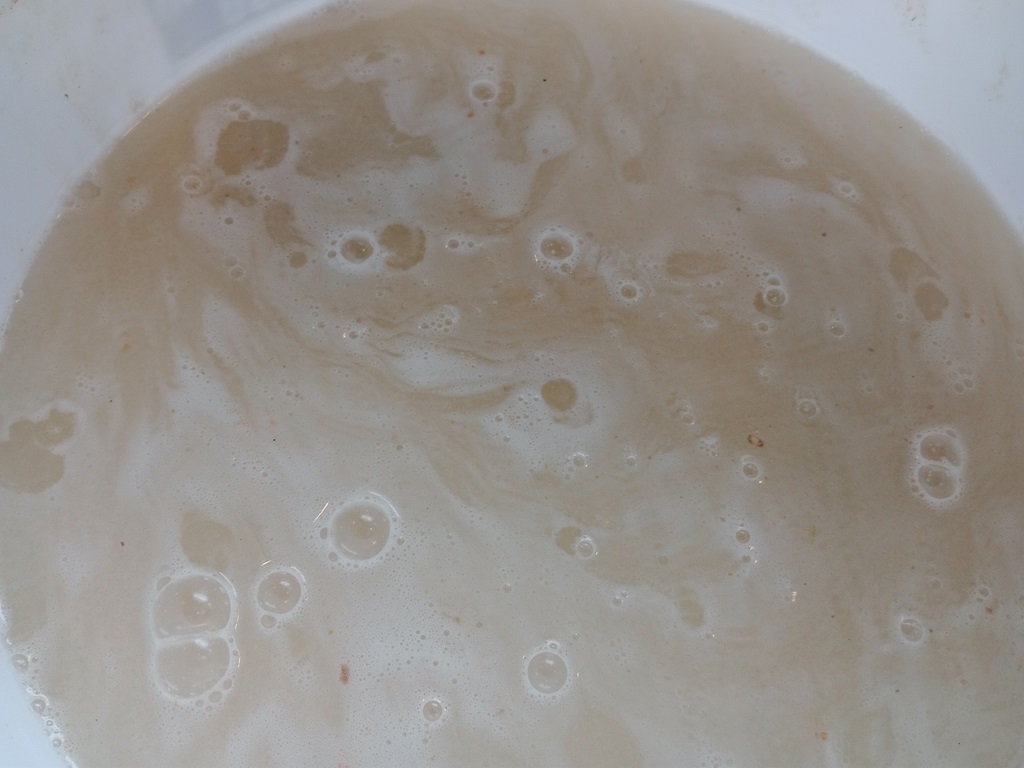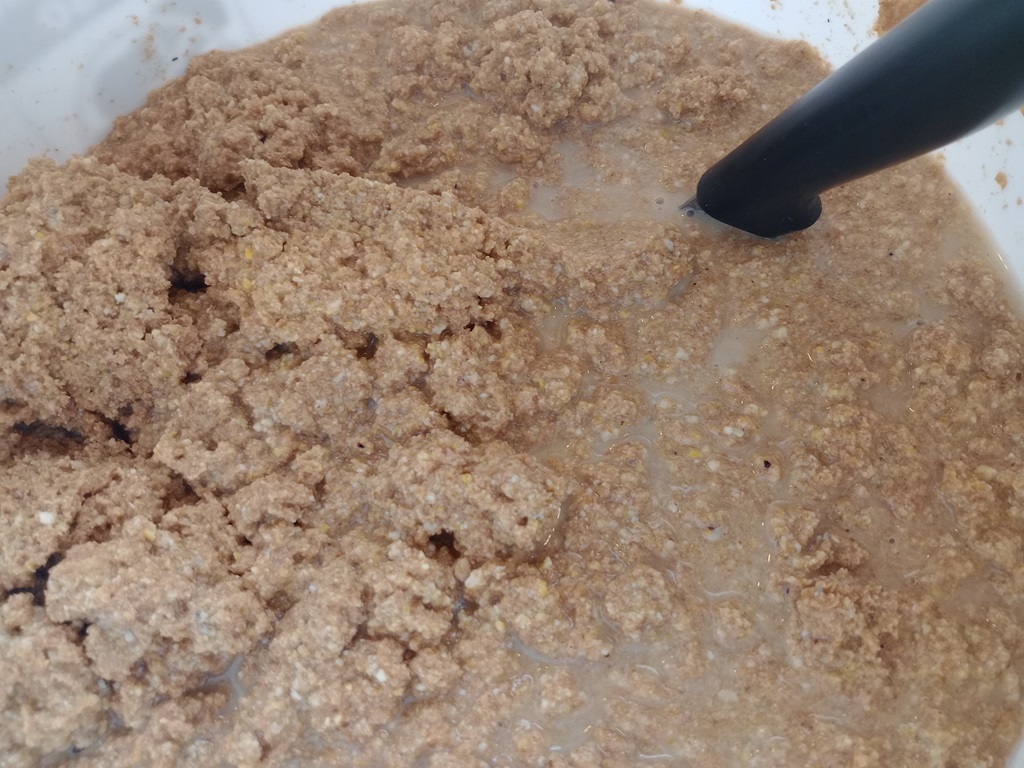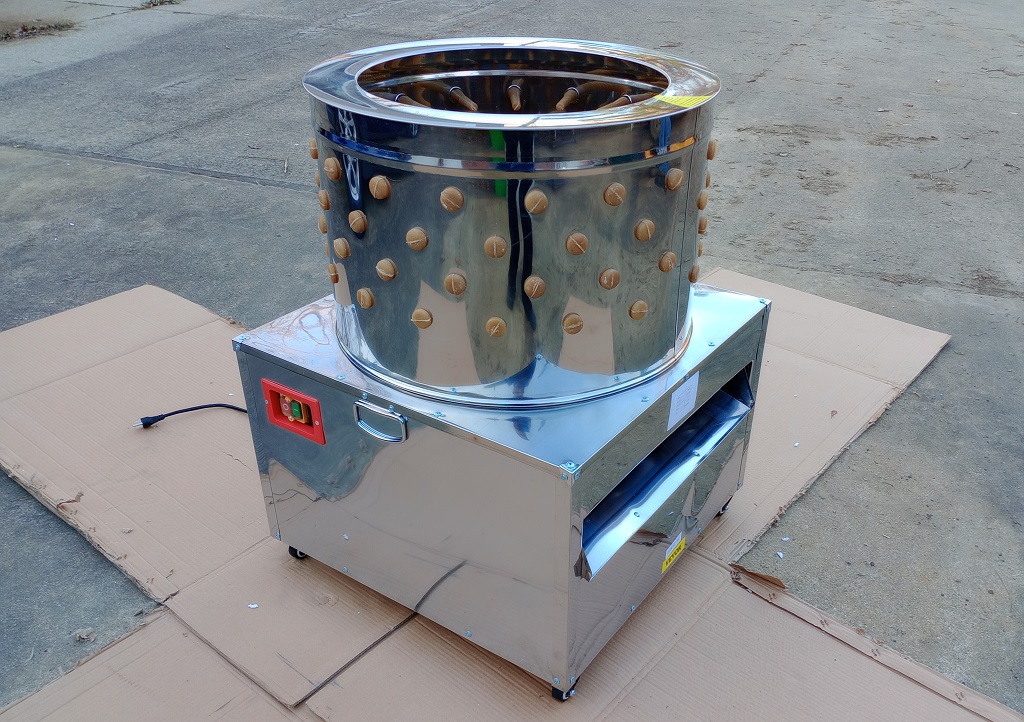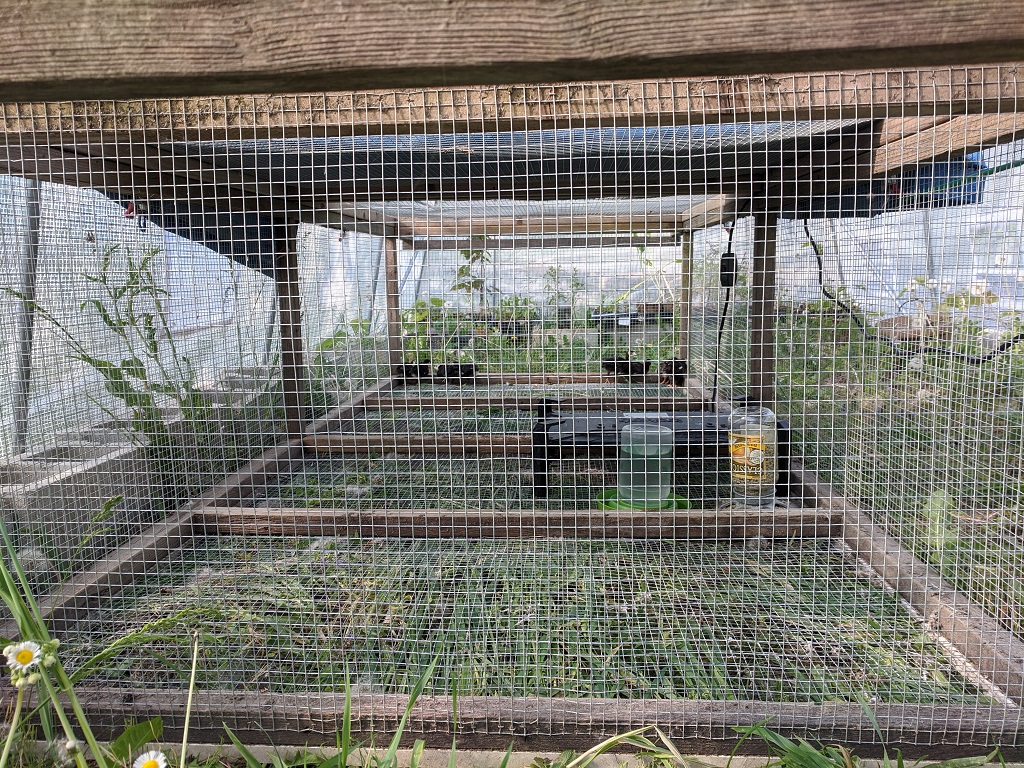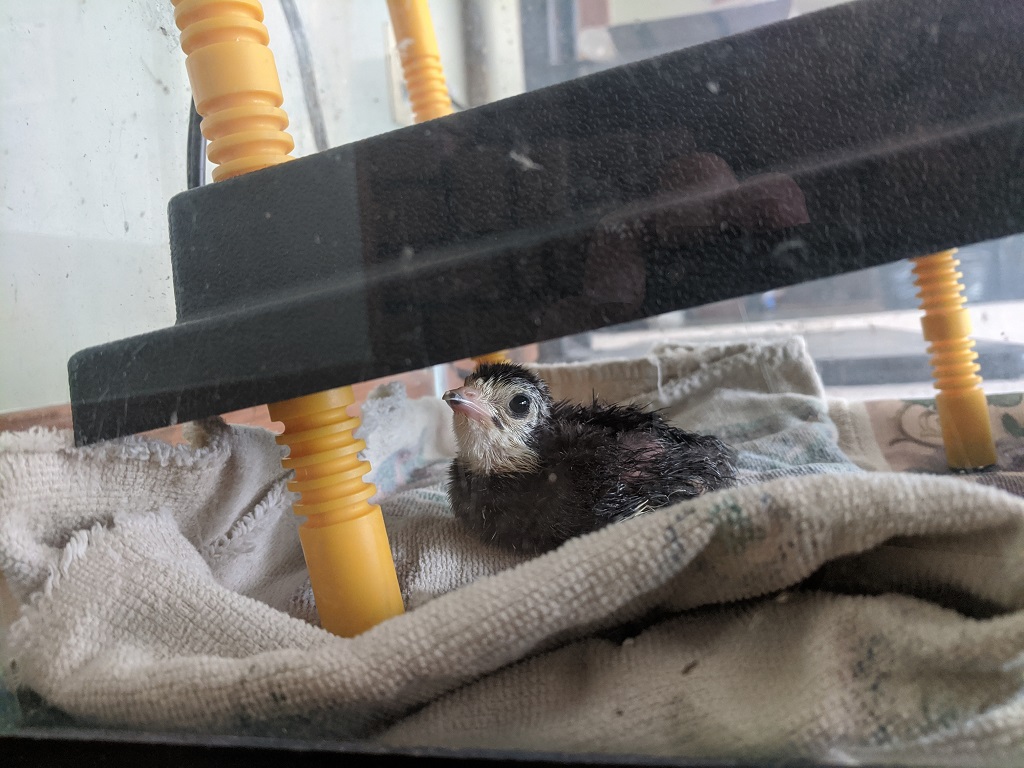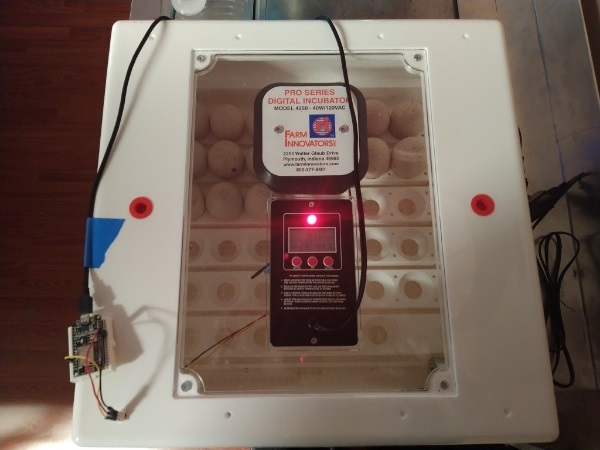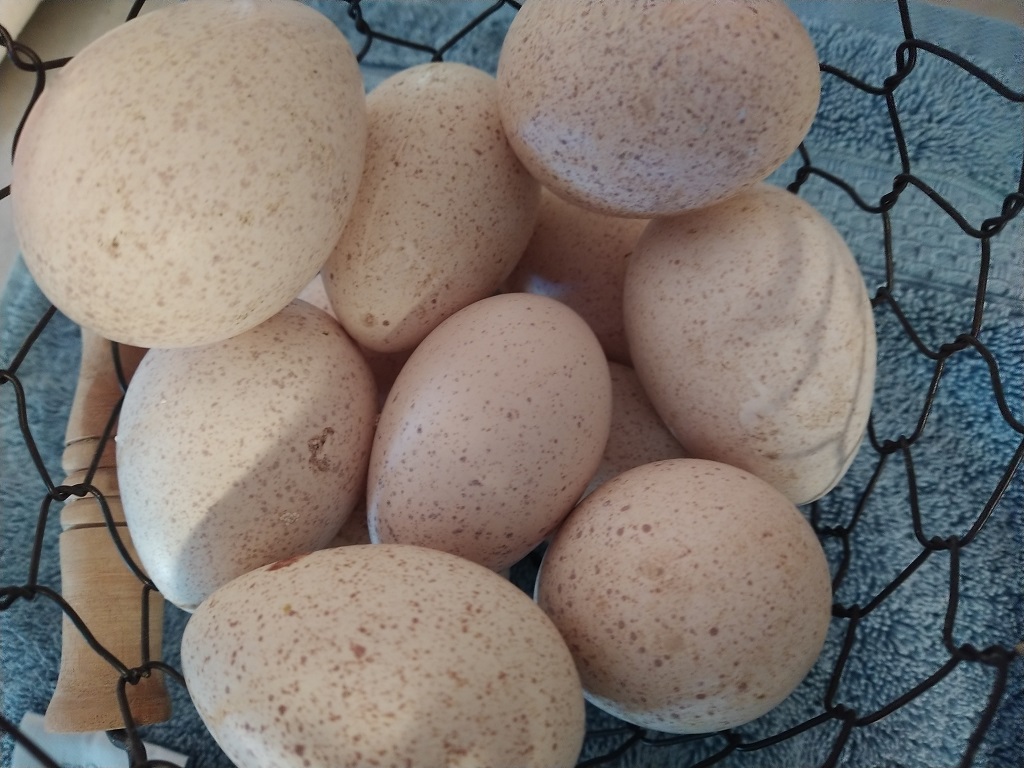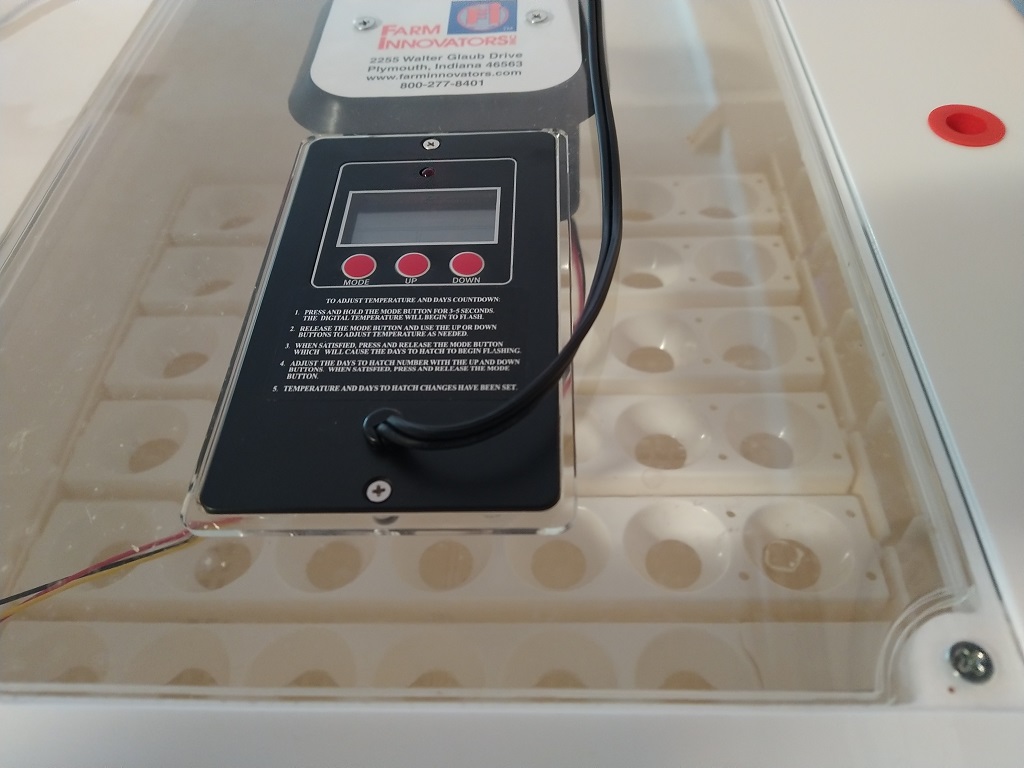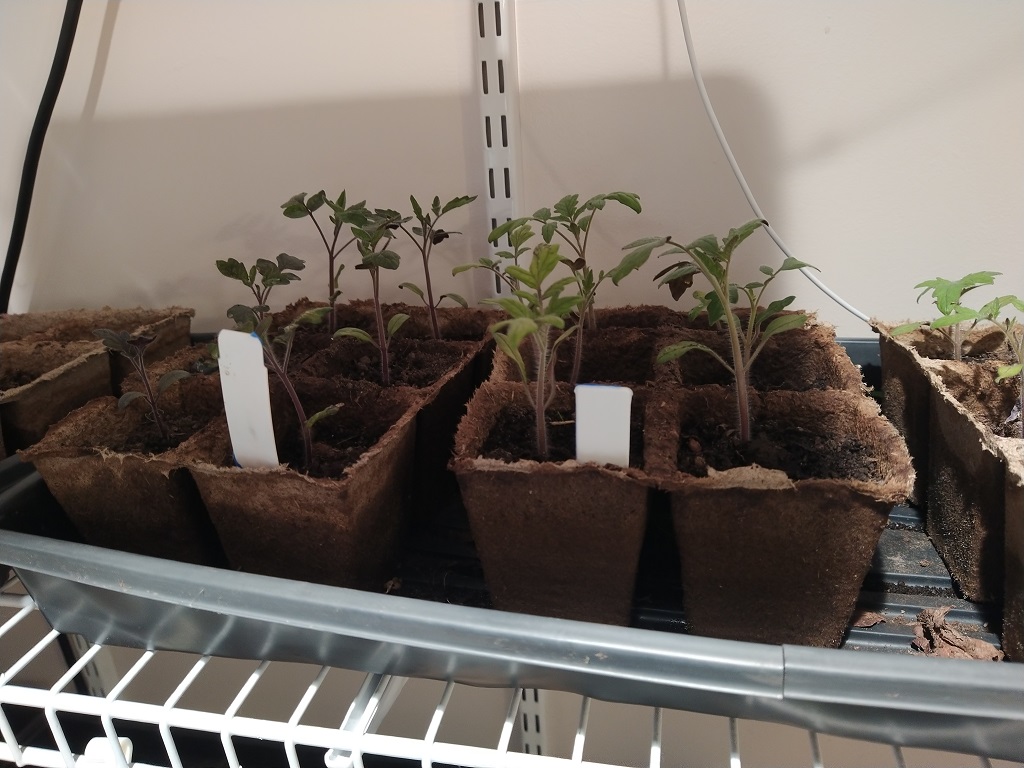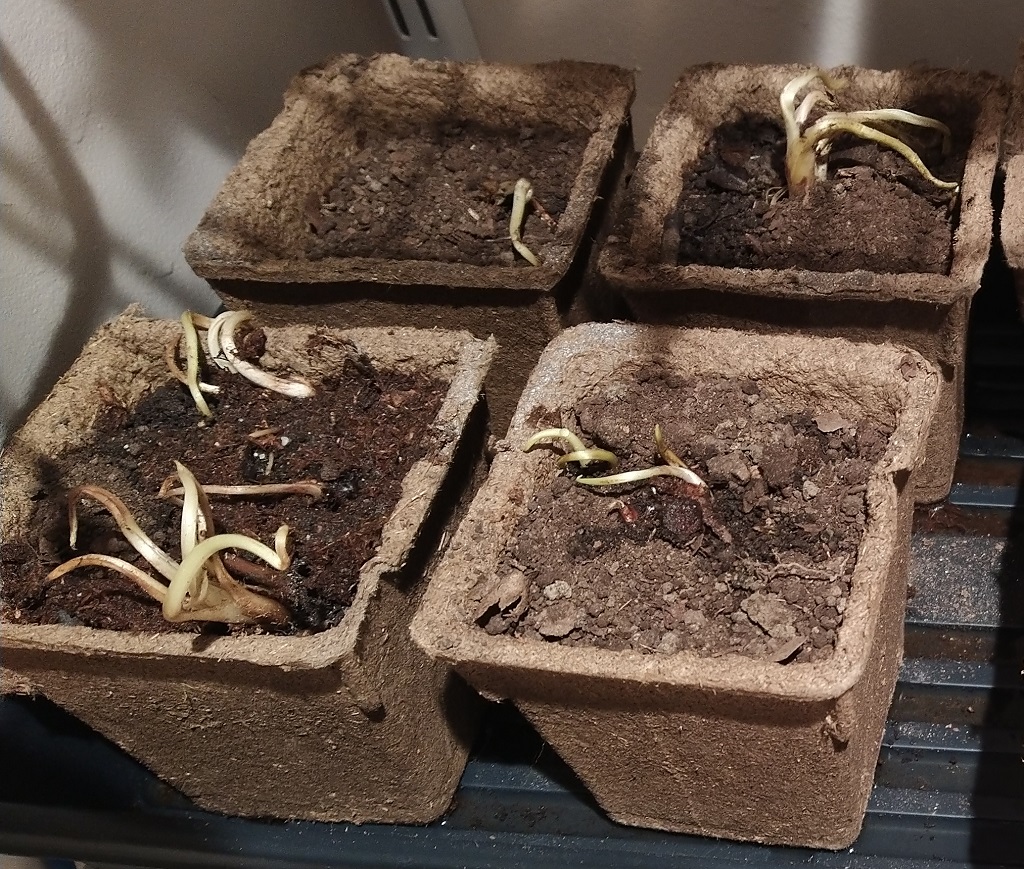I’m not sure if it is because the winter has been particularly cold or the local lake is drained and the ecosystem is disrupted … but we’ve never had a problem with hawks and eagles until this year. For most of the year, the buzzards keep them away. But this month! We lost a duck to a hawk — I came around the corner and saw the thing eating a duck. A week or so later, two ducks were missing and big feathery spots were in the duck yard. We put a small radio tuned to a talk station out in the duck yard — which seems to have helped there, but we lost two chickens today. I think a rooster tried to rescue the hen and was taken out. So Anya spent the day making scarecrows for both the duck and chicken yard. I mounted old CDs around the fence.
Category: Turkeys
Overnight Fermented Chicken Feed
I constantly read how awesome it is to ferment the chicken feed — except we’ve got a lot of birds, and it is cold outside (or hot) much of the year. So we would need a row of five-gallon buckets inside the house to manage the approaches I’ve seen where the feed sits and ferments for three to five days before it is used. I was curious how much fermentation you could get in 24-hours if you had some starter. So I took a scoop of chicken feed into the house & added a bunch of water. I let it sit on my nice, warm countertop for a few days. Then I put a day of food into a five gallon bucket & added my starter. Poured water over the whole lot of it & let the one bucket sit until I was going to feed the chickens the next morning.
Result? It’s got a nice sour/sweet aroma, was bubbling happily, and was well hydrated. The birds love the chicken food mash anyway, and a nice bucket of 70 degree mash on a cold winter day seemed like a nice treat even if the fermentation hadn’t gone anywhere. But it worked! I pull about a quart of the fermented feed to use as a starter, bring the bucket out to feed the birds, add more pellets to my empty bucket, pour the starter in, and cover it all with water until tomorrow when I do the same thing all over again.
Thanksgiving Turkeys
We butchered ten turkeys before Thanksgiving — all hens. The ironic thing is that I am pretty sure we had some cornish cross that ended up bigger than these. We’ve got 56.956 pounds of turkey in the fridge (plus a couple pounds of trimmings for cat treats throughout the year). The plucker worked incredibly — we were able to completely butcher a bird in about 15 minutes.
Chicken Plucker
We got a chicken plucker for processing birds this year — the metal on the base is really thin, the motor appears to have come pre-rusted, and they somehow consistently put one of the rubber sticks in upside down (although, after using it, we think this might be intentional and kind of “sweep” the feathers from underneath out the shoot).
We have been very hesitant to buy one of these — they are expensive. But it takes us so much time to butcher birds. I see videos on YouTube of people plucking a bird in five minutes. That’s not us. At first, I thought maybe it was a “get better with practice” sort of thing. Or that we weren’t scalding enough. Or that we were doing something else wrong. But it’s been years. We’re not getting much quicker, the scald is fine, and the only thing we might be doing wrong is being too picky about what constitutes “plucked”.
The biggest hurdle was that we couldn’t really see one work to determine if we’d be done defeathering in a minute or if we’d still be spending half an hour plucking feathers. There wasn’t a good way to find out, though. People post videos online, but they also post videos of themselves plucking a bird in a few minutes. So that’s not really trustworthy. We finally decided to just spend money and buy a plucker. They work! There may be a few big wing feathers to pull. There may be a few smaller feathers near the feet. But the bird was plucked within a few minutes. It takes me about fifteen minutes to butcher a bird, and Scott was able to get a bird to the “ready to be butchered” point in fifteen minutes (that includes walking across the yard twice). This is such a huge difference — we were able to process all of our turkeys in a single day. It wouldn’t be a short day, there’s a good hour or two to clean everything up once we’re done. But it’s done in a day. And the birds were plucked very well.
Turkey Hatchlings v/s Turkeys in the Mail
The first time we bought baby poultry, we picked them up from a local(ish) hatchery. The chicks hatched overnight, were sorted in the morning, and we picked them up in the afternoon. Happy, healthy chicks. The second time, the hatchery was halfway across the country but offered overnight shipping. That’s not a cheap option, but the birds were still happy and healthy when they arrived. Then we wanted to raise turkeys.
We ordered from a well known hatchery, and the only option was “shipping”. They shipped once a week. And USPS shipping was amazingly slow. So very slow. The USPS employee at the local central depot rang us on Saturday morning to see if we could come pick the birds up because he didn’t think they would survive until they were delivered on what would probably be Tuesday. We did, but only one of the birds survived even though we spent the weekend nursing sick birds.
Last year, we tried again — ordered from another well known hatchery. I couldn’t find a hatchery that offered overnight or two-day shipping. But I was able to find one willing to let me pay a little extra to have additional food added to the shipping box. The chicks arrived, but they were still not super spry.
This year, we hatched our first turkey poults. It’s amazing how much easier it is to get them eating and drinking when you start at day zero! The little guys spent about 12 hours in the incubator drying off, then they spent another 12+ hours sleeping under the heater. Then they were hopping around, investigating everything, and being birds. After sprinkling moistened food on the floor and adding tiny bits of plants (clover and dandelion greens) to the top of the water, the little guys were eating and drinking. And, when would find food or water … all of the other poults rush over to investigate.
Greenhouse Turkeys
We have a greenhouse full of turkeys! It was turkey liberation day at the farm — all of the poults that hatched last week are now in a larger brooder in the greenhouse. They’ve got a larger “turkey toaster” (a plate heater) for the evenings, but they are running around, exploring, and happily eating green leafy things.
First Turkey Poult
2023 Turkey Hatching – The Eggs Have Landed
2023 Hatch – Turkey Hatching
We’re setting up the incubator tonight to get our first dozen turkey eggs going.
I need to leave the incubator sit overnight to get the temperature and humidity regulated. Tomorrow, we’ll be putting the eggs into the incubator.
Notes:
General:
Pointy end down, may need to leave empty space between eggs so they fit
Temperature
Forced-air incubator, so set to 99.5 degrees F (monitoring for temps between 99 and 100 F)
Humidity
First 25 days, relative humidity 50-60%
Final three days, increase humidity to 65-70%
More Sprouts (and chicken chow!)
The tomato plants are starting to get big — still a few weeks before we can plant them outside, but we have plenty of healthy plants.
I had basically given up on the asparagus (they were older seeds), but I finally have five plants sprouted — this is part of my endeavor to get more plant once / harvest yearly stuff growing. 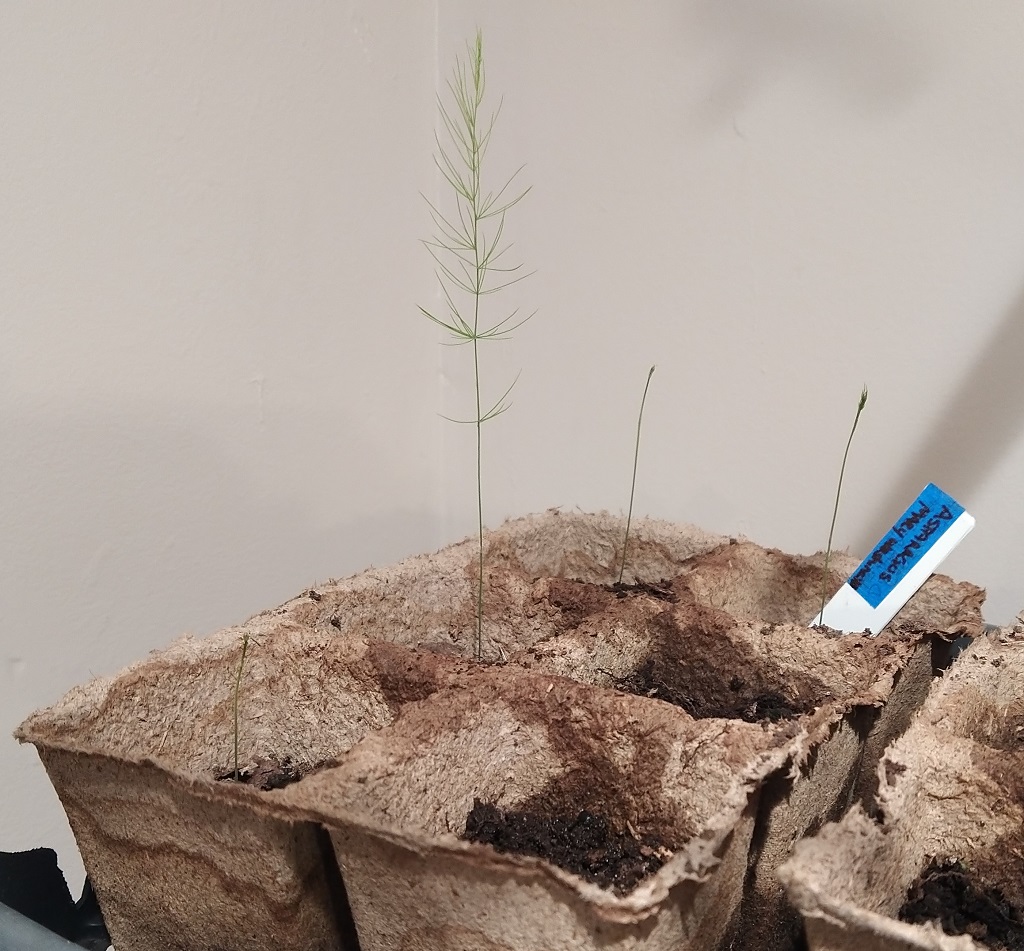
And then there’s the chicken chow — this is Bocking 14 comfrey. It doesn’t go to seed, but provides a high-protein leafy food for chickens and turkeys.
